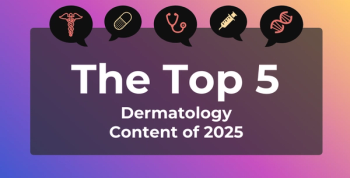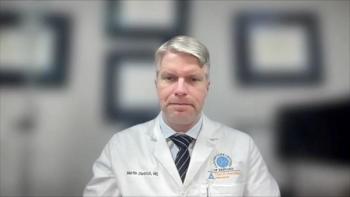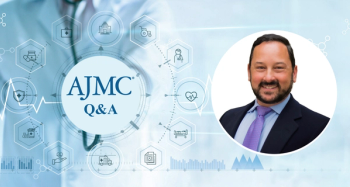
Wellness Initiatives Spotlighted in ACCC's Opening Poster Exhibit
Key Takeaways
- Personalized patient communication is crucial, requiring adaptable, health-literacy-friendly materials to accommodate diverse patient demographics and improve engagement.
- The "Just in Time" program at Fox Chase Cancer Center emphasizes bite-sized, up-to-date content to enhance patient understanding and experience.
The 41st Association of Cancer Care Centers (ACCC) National Oncology Conference began with a diverse range of poster exhibits, highlighting important initiatives in patient wellness.
The
Meeting Patients Where They Are: Personalized Patient Communication
Personalized patient communication has been the primary focus of the Fox Chase Cancer Center’s “Just in Time” health literacy program.1 To best support patients through their first consultations after receiving a new diagnosis, there are lots of steps and factors that should be considered. Language barriers, age differences, cultural backgrounds, and varying levels of education can all impact patients’ experiences as they navigate their cancer treatment.
When a patient’s initial consultation is scheduled, this action triggers a chain of events that includes a mix of emails, texts, informational packets and guides, videos, and surveys. This information overload may come at the expense of patient engagement, noted Daniella Landau, coauthor alongside Linda Fleisher, PhD, MPH, and Caitlin Fanning, MS, RN, OCN. “Our philosophy is: bite-sized,” she added, mentioning how shorter videos, smaller packets, less material, helps cancer centers create health-literacy-friendly materials to meet patients where they are at.
Tailoring content to different demographic groups means health literacy efforts need to remain adaptable as much as possible, Landau continued, mentioning how different centers have—and need—the capability to fulfill language preferences, be mindful about how easy their patients can access and navigate different technologies, and ensure their materials remain up-to-date and reader-friendly.
“In oncology, every 2-3 years things progress, so you can’t use a 10-year-old video or print out, or binder,” she noted, adding, “We see at some hospitals that clinical information is provided to patients as if it would be provided to doctors. People can’t digest that.”
Their surveys garner around a 20% response rate, Landau noted, and these can be crucial to identify gaps in care, areas where optimization is needed, and also what these centers are doing well.
“The challenges are really patient engagement strategies, and that implementation is not cohesive,” Landau noted. “At some hospitals, there isn’t someone who’s clearly leading this initiative. We have patient educators. We have clinicians who are doing patient education. We have libraries” but “not enough at the leadership level.”
When asked about the biggest lesson care centers can learn from their data in health literacy, Landau iterated how they really want to fit patient engagement into the larger, strategic approach across all service lines. She further emphasized how “one size doesn’t fit all...we have a lot of different variables: different ages, different education, minorities, underserved groups, language barriers. So, we can’t just have 1 tool in the box.” For the benefit of patient engagement and overall care, the best “best practices” a cancer care center can have are ones that offer lots of options, flexibility, and are catered to meet patients where they are at.
Prioritizing Wellness
“If we take care of our employees and our staff, they will be more resilient taking care of their patients,” stated Natalya Kusheleva, MS, PA-C, associated executive director, Northwell Health Staten Island University Hospital. Working in an outpatient cancer center can place lots of demands on its staff, lead to burnout, high stress levels, and negatively impact patient experience and care delivery.2
Kusheleva et al’s project looked at the well-being program in place at the Northwell Health Cancer Institute Florina Cancer Center and sought to address the low participation rates and discern the barriers that limit staff involvement. After holding sessions for focus groups, Kusheleva and her team found that lacking awareness and time constraints were the primary obstacles holding staff back from taking part in the program.
These responses led to the integration and expansion of multiple wellness activities that were baked into the normal workday. New strategies ranged from staff huddles or recognition days to offering mindfulness exercises (breathing, meditation, yoga, guided imagery), herbal teas, and even massages. The center’s leadership got involved, implementing a new staff- and patient-centered well-being program, certification programs, and wellness training. Notably, a “wellness on the run” program brought these services directly to staff meetings, mitigating concerns about time constraints on the job. As a part of these efforts, patients were afforded the same resources and wellness opportunities throughout their care, including services that gave nutritional guidance, tai chi, and more.
Between 2022 and 2023, both patient and staff participation increased. For patients, participation numbers ranged between 100 and 150 individuals; however, staff involvement skyrocketed from < 50 to > 300 individuals. Furthermore, post-intervention stress level surveys revealed that patients’ stress during palliative care was reduced by 77%.
Reflecting on the program’s influence on patients, Kusheleva noted, “it’s definitely improved patient engagement and compliance. Patients are seen not only as a subject of treatment, but also a human who receives care from other dimensions outside of their physicians.” Addressing medical needs remains an upmost priority; however, this initiative reveals the value of interacting with patients’ social needs and helping assuage any anxiety, Kusheleva added.
“The biggest lesson for all of us from the administrative and operational perspective is to make sure that you listen to your staff and engage them in wellness activity, understand and meet them where they are in real-time while they're at work," she said. "Having them listen to by folks who are managing them creates an environment of engagement and provides further ability for the staff to care for patients who are in a very difficult period of their lives.”
As the wellness program expands, there are plans to implement a Stress First Aid Program and use tools such as the Functional Assessment of Chronic Illness Therapy-Fatigue (FACIT-Fatigue), Brief Pain Inventory, Hospital Depression and Anxiety Scale (HADS), and other mental health assessments to further evaluate patients’ quality of life, symptom management, and clinical outcomes.
References
1. Landau D, Fleisher L, Fanning C, Landau Z, Lachow K. Personalized patient communications in oncology: bridging gaps to empower patients with “Just in Time” health literacy friendly information during cancer treatment. Presented at: ACCC NOC 2024; October 9-11; Minneapolis, Minnesota.
2. Kusheleva N, Longo L, Simone C. Redefining wellness: creating waves of positive change to meet the unique needs of the oncology staff and patients. Presented at: ACCC NOC 2024; October 9-11; Minneapolis Minnesota.
Newsletter
Stay ahead of policy, cost, and value—subscribe to AJMC for expert insights at the intersection of clinical care and health economics.








